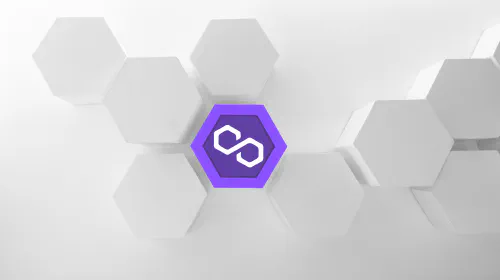Which is Better: Edge Computing vs Serverless?
Salomon Kisters
Jul 10, 2023This post may contain affiliate links. If you use these links to buy something we may earn a commission. Thanks!
Welcome to another blog post from us, where we explore the world of technology and help you understand the pros and cons of different solutions.
Today, we are diving into the hot debate of edge computing versus serverless architectures. Both have gained popularity in recent years, but which one is better suited for your business needs?
In this blog post, we will compare and contrast these two approaches, so you can make an informed decision.
Understanding Edge Computing
Edge computing is an architectural concept that brings compute resources closer to the data source, reducing latency and improving overall performance. By processing data locally, at the edge of the network, you can minimize the time it takes for data to travel back and forth to a centralized server. This approach is particularly useful for applications that require real-time or near-real-time processing, such as Internet of Things (IoT) devices, autonomous vehicles, and facial recognition systems.
One of the main advantages of edge computing is its ability to function even in environments with intermittent or limited connectivity. By processing data locally, you can still perform critical tasks without relying on a steady network connection. Additionally, edge computing provides better control over data privacy and security, as sensitive information can remain on-site rather than being transferred to a central data center.
Examining Serverless Architectures
Serverless architectures, on the other hand, take a different approach by abstracting away the infrastructure details from developers. With serverless, developers can focus solely on writing their code, while the cloud provider takes care of automatically scaling and managing the underlying infrastructure. This approach has gained popularity due to its scalability, cost-efficiency, and ease of development.
One of the main benefits of serverless architectures is their ability to automatically scale resources to match demand. This means that you only pay for the computing power you actually use, making it a cost-effective solution, especially for applications with varying workloads. Serverless also reduces the operational burden, as you don’t have to worry about managing servers, patching software, or monitoring resource usage. This allows development teams to focus more on delivering quality features and less on infrastructure management.
Performance and Latency Considerations
Performance is a crucial factor when evaluating different cloud computing options. In edge computing, data is processed closer to the source, minimizing latency and enabling real-time processing. This is especially important for applications that require instant responses, such as autonomous vehicles or industrial automation systems. By leveraging edge computing, you can ensure faster processing times and a better user experience.
On the other hand, serverless architectures may introduce additional latency due to the usage of shared infrastructure and the need for functions to be dynamically provisioned. While cloud providers strive to optimize the performance of their serverless platforms, the overhead of function warm-up times and potential cold starts can impact the overall response time of your application. It’s important to consider the specific requirements of your application and evaluate if the potential latency of a serverless architecture is acceptable.
Scalability and Cost Efficiency
Scalability is another critical aspect to consider when choosing between edge computing and serverless architectures. Edge computing allows you to distribute compute resources closer to the source of data, which can improve scalability by reducing the burden on centralized infrastructure. This approach is particularly useful for applications that generate a large volume of data at the edge, such as sensor networks or smart cities.
Serverless architectures, on the other hand, offer nearly limitless scalability. With automatic scaling provided by cloud providers, your application can handle sudden spikes in traffic without manual intervention. Furthermore, serverless platforms only charge you for the exact amount of resources consumed, making it highly cost-effective for applications with varying workloads. However, it’s important to keep in mind that serverless pricing can be complex, so it’s crucial to carefully monitor your usage to avoid unexpected costs.
Flexibility and Development Ease
Flexibility and ease of development are important factors to consider when evaluating different computing approaches. Edge computing provides more control over your infrastructure and allows you to tailor the setup to your specific needs. This level of control can be particularly valuable if you have strict security or compliance requirements. However, it also means that you are responsible for managing and maintaining your edge infrastructure, which may require specialized knowledge and additional resources.
Serverless architectures, on the other hand, offer a high level of abstraction, allowing developers to focus solely on writing code without worrying about infrastructure management. This ease of development can accelerate the time-to-market for your applications and streamline the development process. However, serverless architectures may impose certain constraints, such as limited execution time and specific programming languages, which can impact the flexibility of your application design.
Conclusion
In conclusion, the choice between edge computing and serverless architectures depends on your specific use case and requirements. If you require real-time processing, have strict data privacy concerns, or need to operate in environments with limited connectivity, then edge computing may be the better option for you. On the other hand, if you prioritize scalability, cost efficiency, and ease of development, then serverless architectures offer a compelling solution.
Ultimately, it’s important to carefully evaluate the specific needs of your application, considering factors such as performance, scalability, flexibility, and development ease. By analyzing your requirements in depth, you can make an informed decision that best aligns with your business goals.
We hope this blog post has shed some light on the edge computing versus serverless debate and helps you make an informed decision. If you have any further questions or need assistance, feel free to reach out to us. Happy computing!
Stay informed with the latest insights in Crypto, Blockchain, and Cyber-Security! Subscribe to our newsletter now to receive exclusive updates, expert analyses, and current developments directly to your inbox. Don't miss the opportunity to expand your knowledge and stay up-to-date.
Love what you're reading? Subscribe for top stories in Crypto, Blockchain, and Cyber-Security. Stay informed with exclusive updates.
Please note that the Content may have been generated with the Help of AI. The editorial content of OriginStamp AG does not constitute a recommendation for investment or purchase advice. In principle, an investment can also lead to a total loss. Therefore, please seek advice before making an investment decision.

Top 4 Best Places to Stake Polygon MATIC
Explore the top 4 staking platforms for Polygon MATIC to boost your earnings. Compare benefits and drawbacks for maximum returns on your investment.

The Ethics of Immortality: Tech and Life Extension
Delve into the ethical considerations surrounding the use of technology to extend human life indefinitely, exploring the potential benefits and consequences of immortality.

Understanding Dead Wallet Addresses in Cryptocurrency - Definition and Impact
A dead wallet address in cryptocurrency refers to an inactive wallet that can no longer send or receive transactions. It may result from various reasons like loss of private keys or project abandonment.
Protect your documents
Your gateway to unforgeable data. Imprint the authenticity of your information with our blockchain timestamp